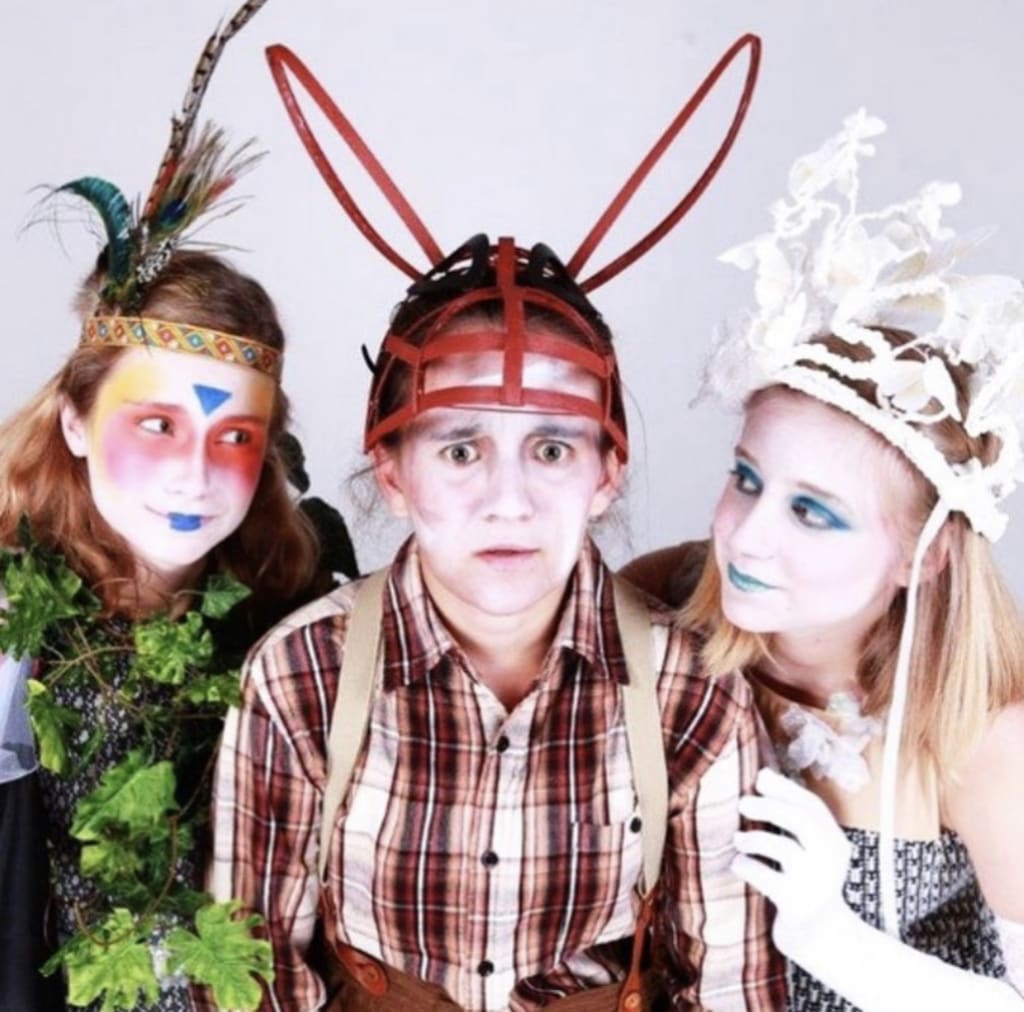Practical Classroom Shakespeare: A Midsummer Night’s Dream for Upper Primary Lesson Ideas
FIVE practical exercises for beginning to teach A Midsummer Night’s Dream to upper primary aged children

Hello my name is Matthew Baker and I trained in Drama, Applied Theatre and Education at the Royal Central School of Speech and Drama. I’ve been making theatre for 10 years with different communities, including schools. I’ve put on A Midsummer Night’s Dream three times on two different continents with children as young as eight playing the lead roles. I’ve run lots of workshops and classes about the story. It’s my favourite play and I love teaching it.
This article contains five practical exercises that you can use when introducing the play to your class. These cover storytelling, acting, creative writing, art and marketing.
This is by no means the only way of doing this, it’s just what I enjoy doing— creating a project that involves lots of different artistic elements.
It’s teaching live art, and teaching is a live art form in itself, so take liberties or stick to the script; it doesn’t matter as long as you feel the students are enjoying it.
So here’s the list of suggestions:
1. The Story Circle. Storytelling.
Get a scene breakdown of A Midsummer Summer Night’s Dream and tell the story. As you do this invite members of your class to be the characters, and give them short but simple instructions and lines for them to act. This works well when sat in a circle so everyone can see each other and they can all take part.
For example in Act One Scene One: Thesus the King of Thebes is talking to Hippolyta the Queen of the Amazons who he marries at the end of the play. Choose two children of any gender to play the parts (if you have time you could even bring some simple costume). Ask questions like ‘how would a King stand?’ or ‘What other things might be in a Greek palace 2700 years ago?’ Get the kids to show you what the things are with their bodies and join the scene. This is a simple physical theatre activity.
In the first part of this scene Thesus says basically that he can’t wait to marry Hippolyta and she says calm down and wait three days. Of course in the actual play this is quite a long bit but for a first retelling keep things snappy or don’t if you have a lot of time get the kids to repeat part of the text but make sure you explain what it means first. I prefer to do most things in normal English unless they are real iconic moments, or where the language is the joke.
This technique can be applied to any story and I highly recommend it as an active way to introduce plot to classes.
2. Character Catwalk. Acting.
Get a list of the characters from the play and explain what they’re like and pick a line from the play for each of the characters to say. Act out the character, for example Robin Goodfellow or Puck, the cheeky fairy, and show how he moves (sneakily, quickly and lightly) if you have done the first exercise and the students know the script then you can illicit this from them. Then get them all to move around the space as the character and spotlight (this just means choose) an example and get the class to watch them back performing it. Do this for all the characters. Both exercises one and two can also be done on a digital platform fairly easily. To extend this you can create simple interactions that happen in the play between characters.
3. Diary from the Characters perspective. Creative Writing.
Get the students to create a journal of one of the characters’ journeys through the play. I suggest a page on each act or each scene they are in. This is also very useful if you make a play this is a great piece of creative research and many actors would do a similar thing in the professional theatre.
4. Design the Costumes and Set. Art.
Next you could get the students in to groups and get them to draw a certain group of characters in the play, for example the Athenians. You could get the class to do some research or give a character to each student. If you have time you could make the costumes after they were designed, or upcycle them to add a textiles element to the class. You could do a similar thing with the set and link it to design, technology and maths as you create set or props for the show.
5. Poster and Press Release. English and Marketing.
Have a poster competition with a written synopsis of the play underneath it. Teach the class about the importance of marketing, ask the head if you can use social media to put a press release out with the class.
And if your feeling really brave... Put on the play. I’ll be covering the finer details of that in another article.
I hope this has been useful 😊
If you would like me or one of my colleagues to come into your school or setting to run on of these workshops— or all of them, you can contact me via
Instagram @matthew_baker_drama
Or via email at [email protected]
You can look at my company’s previous work on Twitter @lpatheatre or the website www.lpatheatre.co.uk
All workshops can be delivered digitally or in person.
Happy Creating.
About the Creator
Matthew Baker
I’m an artist writing about drama, photography and my life.






Comments
There are no comments for this story
Be the first to respond and start the conversation.